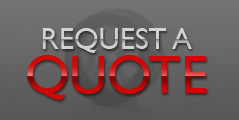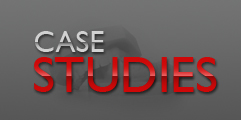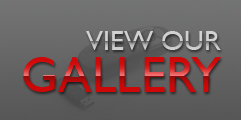3D Printing Frequently Asked Questions

How much does 3D Printing cost?
The cost associated with 3D Printing depends on the file because it’s based on material consumption and machine run time. Depending on the size of the file, it will determine the amount of materials that are consumed and it gets priced accordingly.
My 3D CAD file is completed. Why should I 3D Print?
3D Printing gives you the ability to test your designs and to verify that everything works and fits properly before you go to tooling or production. It’s a great stage in product development in order to ensure that the end product really is what you want it to be. It is also a great time and money saver because you can get a 3D Print done extremely quickly, have the design in your hand – something to either show to investors or your clients or to test it yourself. It can save you a ton of money as opposed to going straight to tooling - if there are any mistakes made in the file in the process of the product design, tooling is going to cost you tens of thousands of dollars where as rapid prototyping is going to cost you a couple hundred bucks and you can fix that problem right away.
How many 3D Printing processes do you offer at 3D Printers Canada? Can you help my business find the right one?
Absolutely. We offer four main 3D Printing processes. Depending on the file and whatever your needs are, as well as budget (each process uses a different technique to build and is priced accordingly), depending on your requirement, each of the separate processes have their own benefit. Whether it be high heat tolerance, accuracy, flexibility, etc. depending on what you need, we can help custom tailor a solution for you.
How detailed are 3D Prints?
The print is printed at approximately 0.001” per layer. So each time the print head travels, the print head will lay down material at 0.001” layers (28 microns). There is also a high quality mode which does 0.0006” (16 microns).
How do Objet’s 3D Printers print multiple materials at the same time?
If you're looking to print multiple materials in the same print, the only machines in the world really that can do it really are any one of the three Connex systems made by Objet – the Objet Connex260, the Objet Connex350 or the Objet Connex500. This is a patented technology where it takes the different materials that are loaded in the system and it actually fuses them at a molecular level using a matrix. All of the materials are acrillic-based and are all on the same foundation, which allows us to fuse the materials, regardless of their rigid or elastomer to create multiple shore strengths, or to even use the parent materials as a multiple material build.
How does the strength of the resin, that Objet 3D Printers use, compare to powder, which other 3D Printers use?
The 3D Processes that use powder are considerably more fragile than the resins. The fact of the matter is that powder, by its very nature, aligns itself randomly wherever there is space, which means there is also a lot of air. This means there aren’t many points of contact, so you won’t get a very homogenous part or a smooth surface finish. When you apply a binder to a powder, it also changes the dimensions, which could result in a lot of issues.
On the PolyJet printers by Objet the UV light that cures the materials actually cures several layers deep, so you're getting full homogeny between the part and between the layers.
What is the cleanup process like for an Objet 3D Printer?
The cleanup process on Objet Printers is extremely simple. There are two materials involved in the build: one is the model material, which will be your end part, and the other is the support material, which is there for any over hangs or drafts within the design. You can't build on air, so you need the support material there. The support material is a wax-like material, it’s very easy to clean – you can pick it off with your finger or by using an electric toothbrush and some water. The larger printers also come with a water jet, which is a pressure hose used to blast the materials away. Because the material is so soft, typically it comes off in under a minute, depending on the size of the part. It’s very easy to clean and is actually a bio-degradable material so if anything goes down the drain while you're using a water jet there are no toxic or hazardous effects on the environment.
If I had an Objet 24 Desktop or Objet 30 Desktop in my house, what will the noise level be like? Will it be loud and disruptive?
No. The Objet systems are very office, house and environmentally friendly. They don’t release and fumes or residual odour. As for the noise, when the printers are idle, the noise is very, very low – essentially it is the sound of a fan, like a computer fan. When it is printing, you will hear a slight humming, which is the print head moving back and forth, but it is very difficult to detect and it’s not at all disruptive.
What materials can you simulate?
We can simulate ABS, polypropylene, polyethylene, as well as elastomeric (rubber and silicone) products. With digital mixing, which is exclusive to the Objet Connex builds, you can now take those two rigid materials (rubber and silicone) or the rigid material and the elastomer material and mix them to create custom shores (materials). We can also print clear materials and high temperature-resiostant materials.
What kind of resolution and accuracy is possible with Objet’s 3D Printers?
Objet has the most accurate (3D Printing) systems on the market. Typically, with other technologies, you're looking at 0.010” – 0.013” layers or even 0.004” – 0.006”. Our printers print at 0.001” layers, so we are already four times more accurate than anything else on the market. The only other 3D Printing systems that are more accurate are the high quality systems from Objet (Connex family) which can print layers half that size.
What are the dimensions of the print trays and build envelopes? How big can my 3D Prototype be?
The build envelopes can range based on the size of the printer. Anywhere from a 10”x8”x6” build tray all the way up to 20”x16”x8” build tray. The build tray lowers as it prints to give you that third dimension. We have printed an entire car dashboard, just in pieces. It requires some assembly, but any sized 3D Prototype can be printed.
What kind of 3D Post Processing is involved?
The post processing that is involved will really depend on what you’re looking to achieve. Typically, Objet parts don’t require much, if any, post processing because of the high resolution – there is no sanding, polishing, finishing or curing required. That being said, some people consider the cleaning of the support material to be post processing so that could take a few minutes. Also, the parts are fully paintable so that is an option as well.
If you have any other questions, feel free to send us an email! You might even get your question published!
http://www.3dprinterscanada.com/corporate-information.php
Email: info@3dprinterscanada.com






